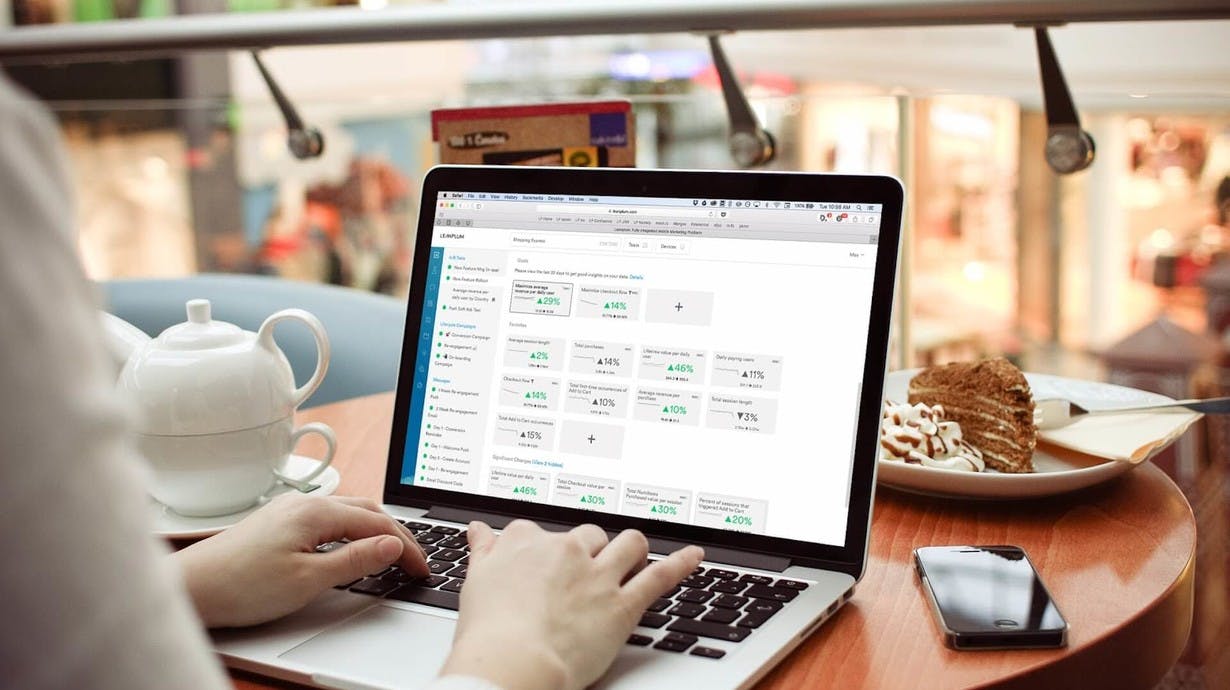4 Key mobile metrics: Become your team’s mobile hero
Track more mobile metrics to find out what makes a difference in user behavior. In this post, we’ll go over what metrics your team really needs to watch.

“Data is the future.”
“Data is what separates a successful marketing campaign from a failed one.”
We’ve all heard it before. Data is supposed to be the panacea to our marketing woes.
How do we obtain data in the first place? It’s possible to track every single in-app event. But without a dedicated data science team, massive spreadsheets and databases won’t help your marketing.
Data-driven marketing isn’t just about collecting information indiscriminately. It’s about capturing data properly, as much as you can, and then sorting it into sensible, actionable pieces.
While opens and clicks are a great place to start, you can track more mobile metrics to find out what makes a difference in user behavior. In this post, we’ll go over what metrics your team really needs to watch.
Session length
Session length is measured by the amount of time between app open and app close. It gives you a baseline average for measuring app engagement. If users are engaged, they’re more likely to use the app for longer sessions. But you can extrapolate and use session length as more than just a shorthand for engagement.
With proper segmentation, session length reveals whether an audience is having trouble understanding the app. If a person has frequent but brief sessions, especially shortly after app install, there’s a chance they didn’t fully understand the onboarding and they’re stumbling their way through.
Furthermore, you can compare session length to other key flows, like checkout and onboarding. By matching the initial session length with the onboarding completion event, you can calculate the average completion time for the flow, split into as many segments as necessary.
Session times can also reveal whether your checkout flow is too long. If the average app session time is only a couple of minutes, while the checkout process takes at least five minutes, the mismatch might catch users off guard, prompting them to abandon the flow.
By iterating and improving on a long checkout process, you can increase successful purchases and make a tangible impact for your company.
Session Interval
If session length is shorthand for engagement, then session interval is shorthand for retention. This metric measures the average gap between user sessions. The longer the gap, the closer the user is to churning—relative, of course, to your app’s natural usage cadence.
Session intervals are superficially similar to daily active users (DAU) and monthly active users (MAU), but this metric is more precise. There’s a big difference between someone who launches the app once a month versus once a day, and surely there are a handful of people who use the app multiple times per day. By tracking session intervals, you’ll catch minute shifts in average usage frequency before the numbers are reflected in DAU/MAU.
The overall average session interval also gives you a feel for the app’s default usage cadence. It’s useful to keep this baseline in mind when comparing results between segments.
Screen flow
Studying the flow between different screens in your app is necessary for optimizing the user experience. While session duration is a good metric for determining overall satisfaction with the app, screen flow data lets mobile teams narrow satisfaction down to a few specific screens.
For one, examining how users navigate between screens can reveal misleading interpretations gleaned from session length and session interval stats. If one segment spends a lot of time in the app but always exits at the same screen, or if they click quickly between screens for a few minutes before closing the app, this could be a sign of poor UX. The time spent in the app might be high, but the reason for it is that the person can’t find what they want.
More broadly, studying screen flow data can help teams improve the UI and UX of the app. It’s difficult to optimize a navigation menu or login screen without first seeing where users are hitting snags.
A good place to start is with the screen flow of your onboarding process. By analyzing where users drop off in the onboarding flow, you can increase the number of users who stick around, engage more with your app and become loyal.
Customer lifetime value
User experience notwithstanding, app publishers must remember that they’re running a business. Lifetime value, or LTV, represents revenue. It’s the fuel that allows you to run expensive acquisition campaigns, purchase optimization software, and ultimately grow your company. Keeping LTV in check is a must.
LTV can be spread across various timeframes (depending on the range of your retention data), but the gist of it remains the same. If you have a high LTV, it means you’re successfully monetizing each new customer. Either these users are sticking around for a long time, or you’re driving big purchases early in the lifecycle.
There’s no doubt that LTV is important, but you generally can’t influence it directly. This metric is a result of countless smaller metrics, like user retention and customer loyalty. The end goal is for all marketing and app optimization to add up to a high customer LTV.
The best way to track mobile metrics
These are the metrics that you need to track, but that begs the question: what’s the best way to track them
Now that you know what metrics to track, you need to decide if you should invest in a data layer (and if so, should you build or buy/rent) or go with an SDK-centric approach. While many companies start with the latter approach as a matter of expediency, they later regret it as the number of external solutions can quickly pile up, slowing down marketing initiatives and eating up engineering cycles.
The typical app has three to four analytics tools alone. On top of this, you may need a push notification SDK, a retargeting network SDK, a multi-channel marketing cloud SDK, a Snapchat SDK, a Facebook SDK... you get the point. A centralized data layer can create economies of scale from a single engineering initiative — implement once, send anywhere — and a single source of truth across all of these marketing efforts.
With a complete mobile marketing platform like Leanplum and a data layer like mParticle, you get the best of both worlds. mParticle can act as your single solution and stream all the data to where you can easily configure the dashboard to display these key metrics at a glance.
With this, app teams can keep an eye on the most important metrics, knowing that the full data is available if need be.



